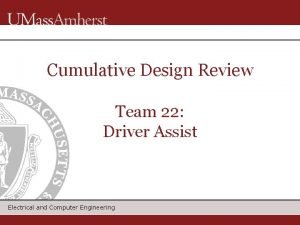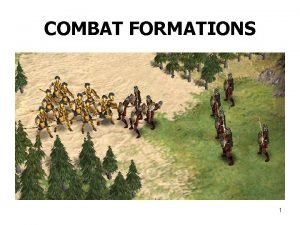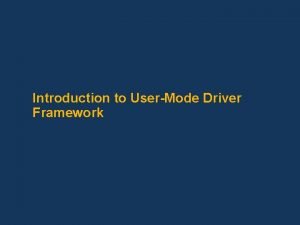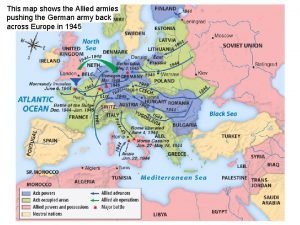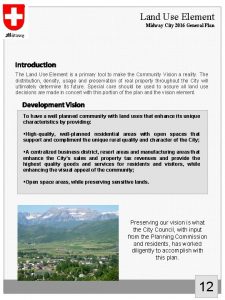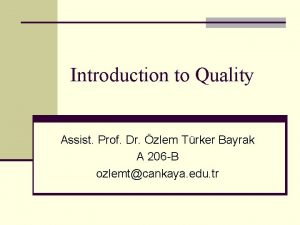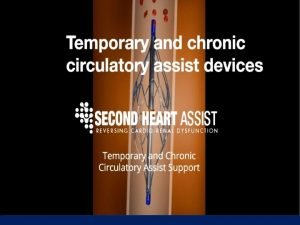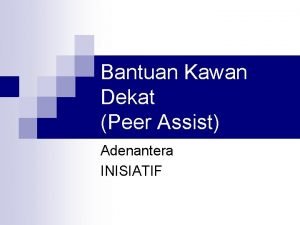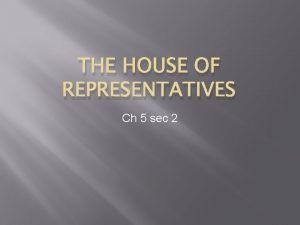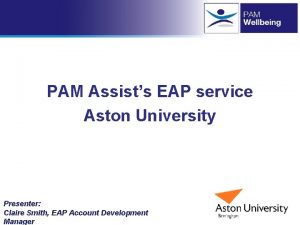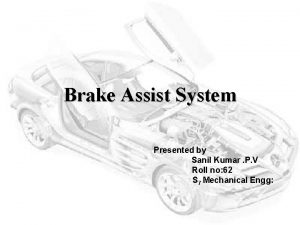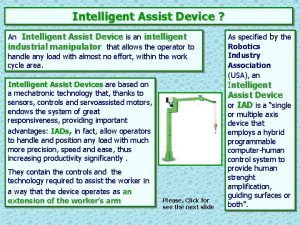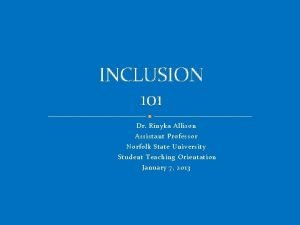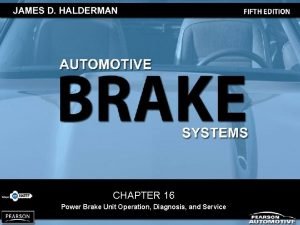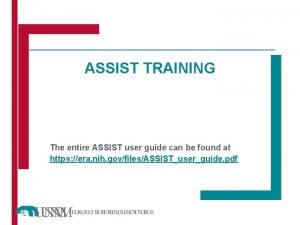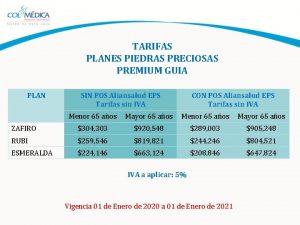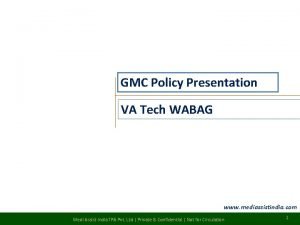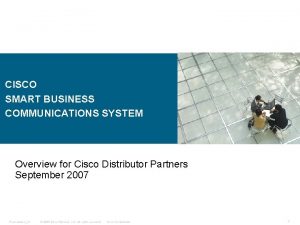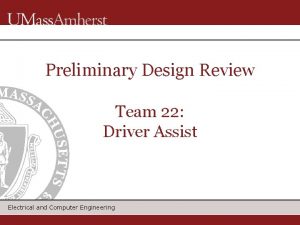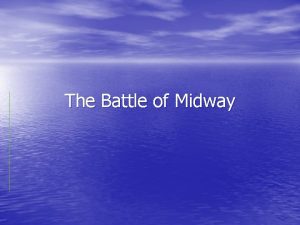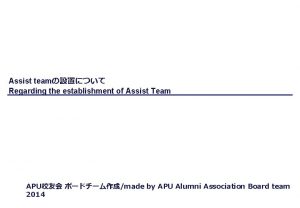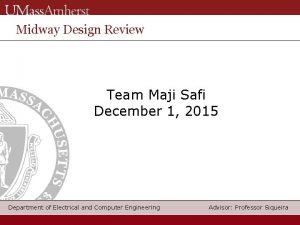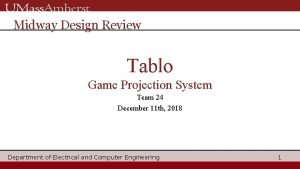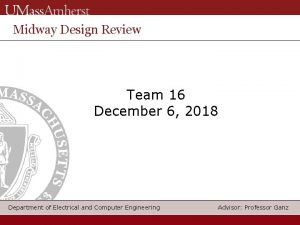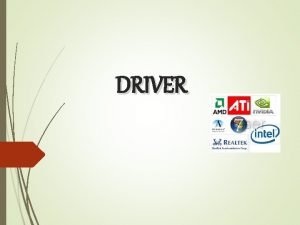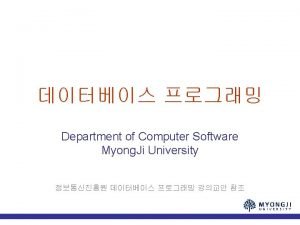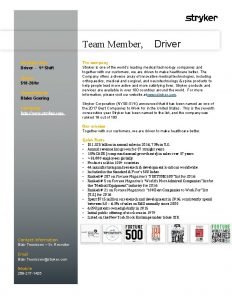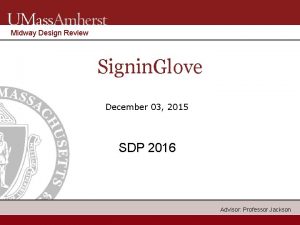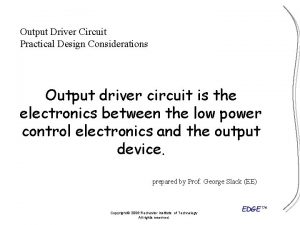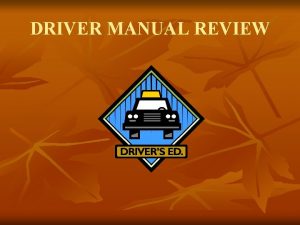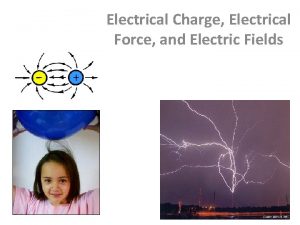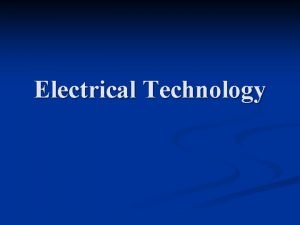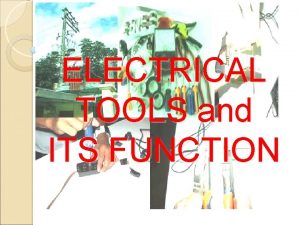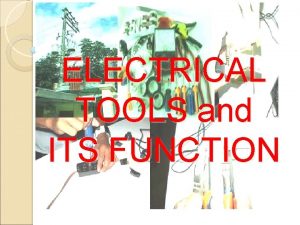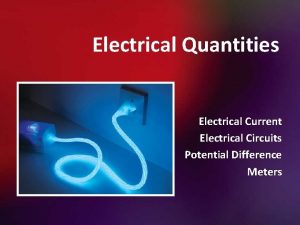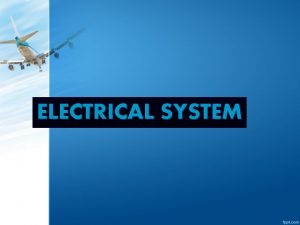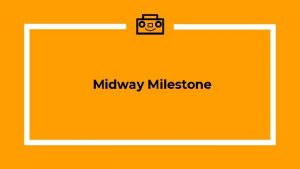Midway Design Review Team 22 Driver Assist Electrical





























- Slides: 29

Midway Design Review Team 22: Driver Assist Electrical and Computer Engineering

Primary Solution § Our solution is to create a joystick that mechanically controls the steering wheel, brakes, and throttle § The joystick will pivot horizontally allowing the driver to turn left and right. http: //img. gizmag. com/onehandeddriving. JPG? fit=max&h=670&w=77 0&s=4 af 0 a 21 ce 275 fd 7 e 9 e 9 c 78 f 8 c 92 c 344 c Electrical and Computer Engineering 2

Block Diagram Control signal Joystick signal Feedback signal Power Electrical and Computer Engineering 3

MDR Deliverables §Have motor selected with correct output torque and speed (have gearing ratio required computed) §Have a wheel jacket prototype created and mounted on steering wheel base §Have control over motors movements §Have power circuit functioning to drive controller §Have a functioning brake and throttle prototype §Have a functioning battery recharger Note: Red font was original MDR deliverable Electrical and Computer Engineering 4

Individual Assignments for MDR Steve Cook: Qingchuan Wu: §Throttle §Brakes §Power Supply §Motor Driver Design §Battery Charger Sam Burke: §Gearing §Wheel Jacket §Controller Debugging Electrical and Computer Engineering Andrew Klinkowski: §Controller §Motor Driver Implementation 5

Motor Selection Requirements • Speed: 1. 5 rps • Torque: 6 Nm Motor Specs • Speed: 4000 RPM • Torque: . 125 Nm • Brushless DC Electrical and Computer Engineering 6

Gearing § A gearing ratio of 48 will allow us to have the outputted torque required, while staying within the speed limit. §. 125 Nm * Gear. Ratio = 6 Nm § Gear. Ratio = 48 § Speed = (4000 rpm/60)/48 = 1. 38889 rps Electrical and Computer Engineering 7

Steering Wheel Jacket § In our prototype design a piece of plexiglass was used with a bike chain mounted to it using JB Weld. § The bike chain can be spun by the motor which spins the steering wheel Electrical and Computer Engineering 8

Brake Prototype § The brake stops the car and control reverse in the video game. • Includes: potentiometer, wire, and hand brake • Potentiometer sends a voltage reference between 0. 58 V to 4. 5 V depending on depression of hand brake • Higher voltage corresponds to harder braking • 10 k Potentiometer is used to reduce power and maximize voltage reference swing. Electrical and Computer Engineering 9

Throttle Prototype § Throttle allow the driver to control the gas • Includes: potentiometer, wire, and throttle • Potentiometer send a voltage reference between 3. 92 V to 0 V depending on position of the throttle • Lower the reference voltage corresponds to faster acceleration • 10 k Potentiometer is used. Electrical and Computer Engineering 10

Power – Battery Charger Requirement § Charge external 12 V Ni. MH battery from the cigarette port. 11 - 14 V input § Limit Charging current below 3 A § Limit Charging voltage below 16 V Electrical and Computer Engineering 11

Battery Charger § Used to charge external battery pack from 12 V car battery Electrical and Computer Engineering 12

Power – Battery Charger Result § SEPIC topology charger Electrical and Computer Engineering 13

Power – Battery Charger Simulation Electrical and Computer Engineering 14

Power – Battery Charger Result R load Vin I in Vout I out P in P out Efficienc y 20 12 1. 56 15. 35 0. 748 18. 72 11. 4818 61. 3 15 12 2. 18 15. 35 0. 994 26. 16 15. 2579 58. 3 10 12 3. 04 15. 35 1. 46 36. 48 22. 411 61. 4 9 12 3. 39 15. 35 1. 62 40. 68 24. 867 61. 1 8 12 3. 4 15. 35 1. 77 40. 8 27. 1695 66. 6 7 12 3. 38 14. 4 1. 86 40. 56 26. 784 66. 0 6 12 3. 39 13. 7 2. 03 40. 68 27. 811 68. 4 5 12 3. 43 11. 3 2. 31 41. 16 26. 103 63. 4 4 12 3. 49 10. 7 2. 48 41. 88 26. 536 63. 4 Electrical and Computer Engineering 15

Power Supply Electrical and Computer Engineering 16

Power – Power Supply Requirement § Requirement • Provide regulated supply voltage 7. 5 V for controller • Provide 2 isolated voltages 12 V for driving Mosfet § Implementations • Flyback converter • PI control on 7. 5 V output • Mutual inductance regulation on 12 V outputs Electrical and Computer Engineering 17

Power – Power Supply § Requirement • Provide regulated supply voltage 7. 5 V for controller • Provide 2 isolated voltages 12 V for driving Mosfet § Implementations • Flyback converter • PI control on 7. 5 V output • Mutual inductance regulation on 12 V outputs Electrical and Computer Engineering 18

Power – Power Supply Simulation Electrical and Computer Engineering 19

Power – Power Supply Simulation Electrical and Computer Engineering 20

Power – Power Supply Result § Able to provide power to the controller and Mosfet Driver § Insufficient cross regulation due to the leakage inductance of the toroid Electrical and Computer Engineering Vout 7. 5 (V) Iout 7. 5 (A) Vout 12 (V) I out 12 (A) 7. 86 0. 5 10. 9 0. 15 7. 44 0. 3 12. 6 0. 10 7. 40 0. 1 15. 8 0. 05 21

Motor Controller § An arduino is used to control the motor. § The arduino controls the frequency of the motors phases Electrical and Computer Engineering 22

Motor Driver § The driver amplifies the arduinos outputs to be used by the motor Electrical and Computer Engineering 23

Motor Gate Driver Electrical and Computer Engineering 24

Basic Motor Phase control U/V phase excitation A’ = 0 B’= 1 A=0 B=1 Flow of current Electrical and Computer Engineering 25

Cost Analysis Product Cost Brushless DC Motor $127. 00 Steering Wheel & Brakes attachment $57. 00 Bike Chain $6. 00 Plexiglass $4. 00 JB Weld $5. 00 Hand Brake $7. 00 Throttle $14. 00 Total $221. 00 Electrical and Computer Engineering 26

CDR Deliverables Steve Cook: Andrew Klinkowski: § 3 D print top half of the joystick §Install hand brake and throttle §Power supply PCB design §Full control over DC motor at required spec of 1. 5 rps § 3 D printed wheel jacket §Mount bike chain to wheel jacket Sam Burke: Qingchuan Wu: §Implementation of gear train §Mount functional motor to drive steering wheel §Controller PCB design Electrical and Computer Engineering §PCB printed charger §Charger optimization increased to 85% §Power supply rails well regulated 27

Motor Phase control- Buck (CDR) U/V phase excitation A’ = PWM B’= 1 A=0 B=1 Flow of current Normal PWM on PWM off Electrical and Computer Engineering 28

Motor Phase control- Boost (CDR) U/V phase excitation A’ = 0 B’= 1 A = PWM B = 1 Flow of current Normal PWM on PWM off Electrical and Computer Engineering 29
 Assist electrical
Assist electrical Squad leader symbol
Squad leader symbol User mode driver framework
User mode driver framework Nbattle of midway
Nbattle of midway Midway shooting sports
Midway shooting sports The map shows that allied forces
The map shows that allied forces Midway city zoning map
Midway city zoning map Battle of midway
Battle of midway Battle of midway
Battle of midway Emory cr assist
Emory cr assist Leader development marines
Leader development marines Quality assist
Quality assist Leslie miller md
Leslie miller md Cisco smart assist
Cisco smart assist Peer assist adalah
Peer assist adalah Als assist
Als assist The whips assist the party leaders by
The whips assist the party leaders by Travel guard modify policy
Travel guard modify policy Pam assist counselling
Pam assist counselling Brake assist system
Brake assist system Intelligent assist device
Intelligent assist device One teach, one assist pros and cons
One teach, one assist pros and cons A defective vacuum brake booster will cause a ________.
A defective vacuum brake booster will cause a ________. Assist user guide
Assist user guide Atencion domiciliaria sanitas premium
Atencion domiciliaria sanitas premium Pbx call assist 2
Pbx call assist 2 School mental health assist
School mental health assist Medi assist escalation matrix
Medi assist escalation matrix Cisco smart assist
Cisco smart assist Hengityspalje
Hengityspalje
